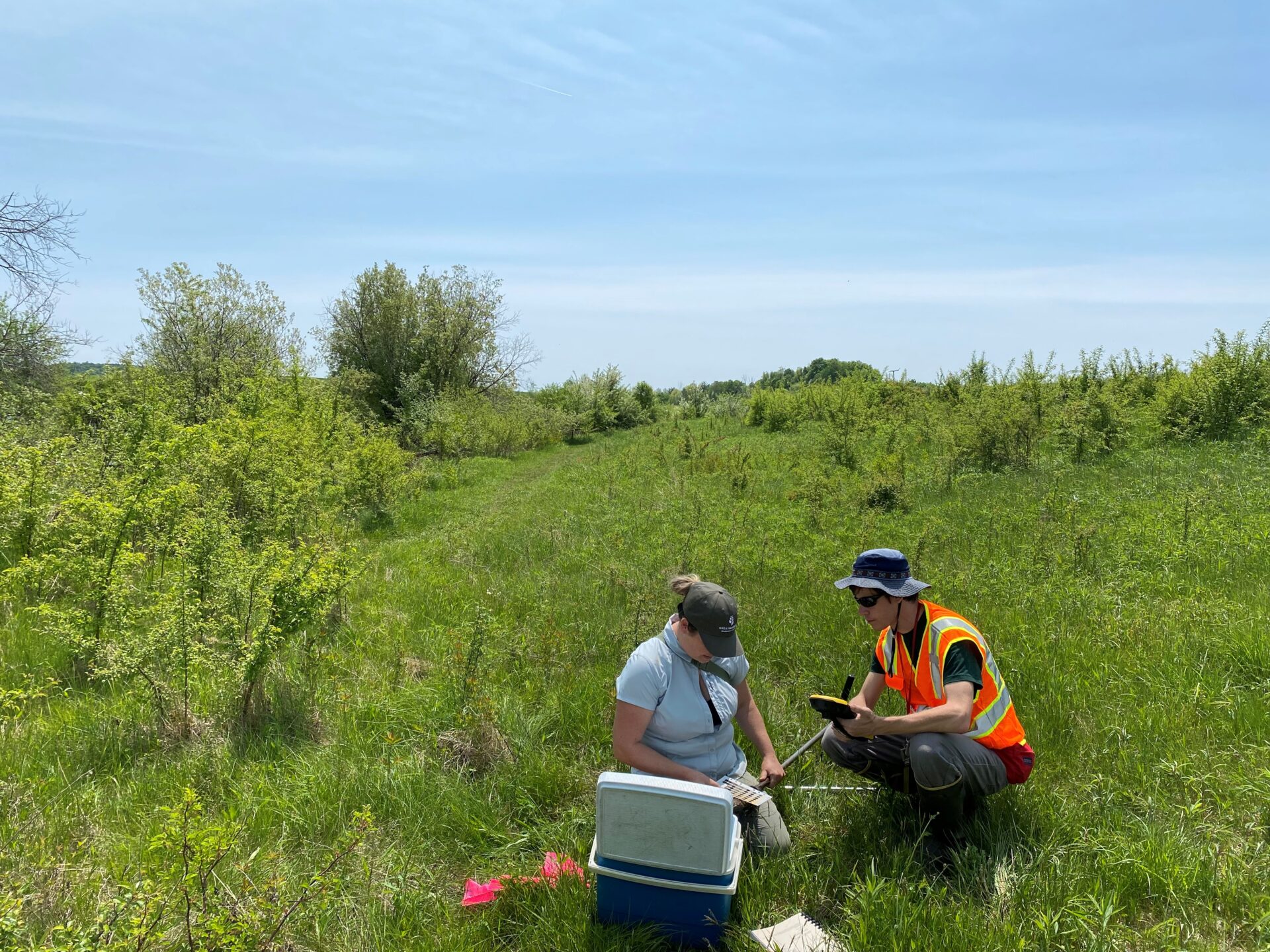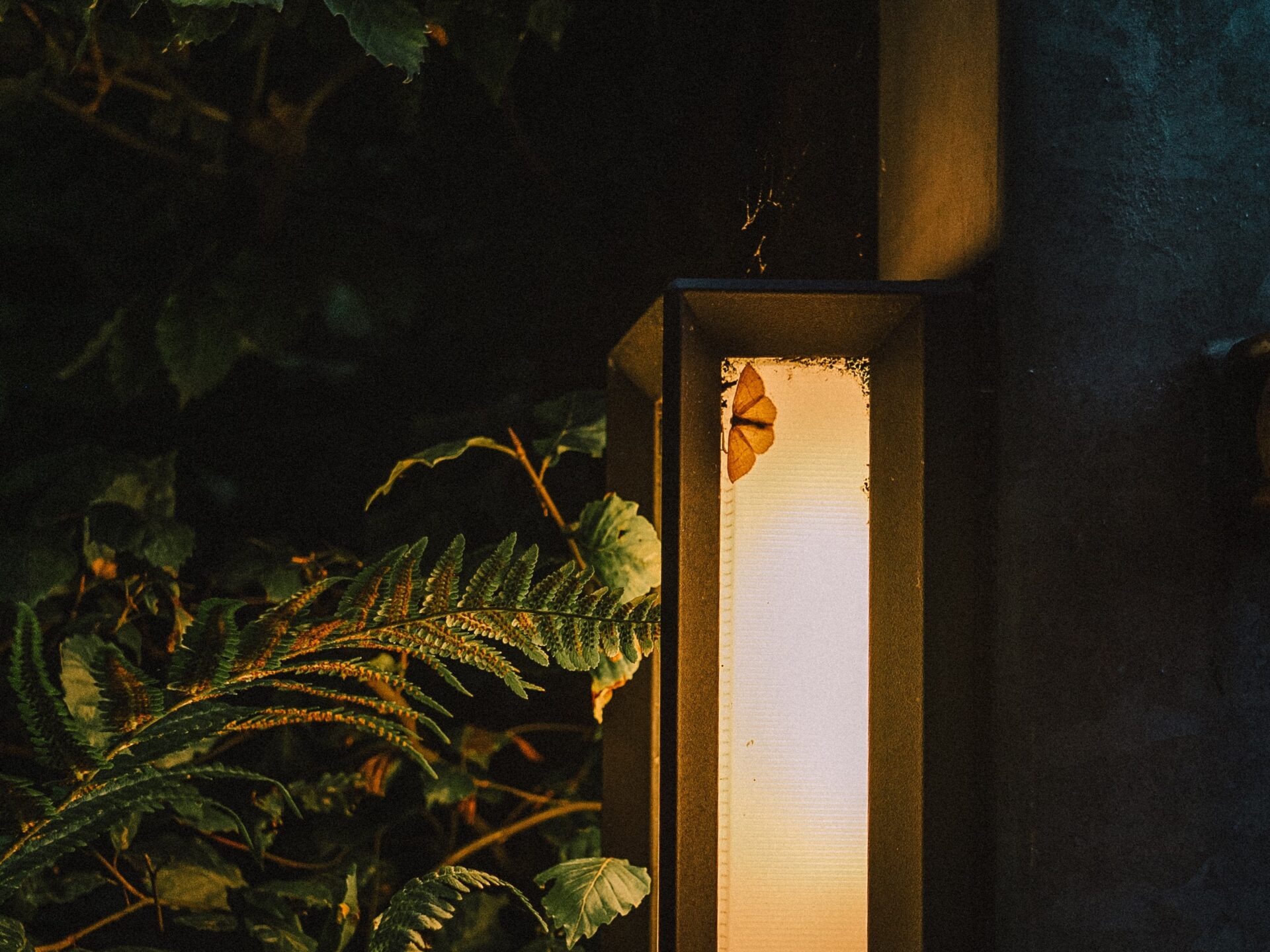
Monday Announcement: Multiple Staff Promotions
July 24, 2023
Landscape Architecture as STEM
July 26, 2023
Like Moths to a Flame: The Impact of Light Pollution on Moths
Author: Liz Clift
Moths are attracted to light—so much so that we use “like moths to a flame,” to indicate something people are drawn toward, generally to their detriment. Moths are a vital component of many food webs. They pollinate; are an important food source for birds, mammals, and other insects; and as caterpillars may even feed on other insects and spiders. Unfortunately, moths, along with other insect populations, are on the decline.
Light pollution may be one of the causes. Studies over the past decade have shown that artificial lights, and light pollution more broadly, are causing real problems for moth populations. The extent of those problems is still up for debate, but researchers are calling for more investigations to understand these impacts at the population level.
One study tested the flight-to-light behavior of more than 1,000 ermine moths (Yponomeuta cagnagella) in Europe. Researchers in that study gathered the moths as larvae; approximately 300 came from areas with dark skies while approximately 700 were gathered in light-polluted areas. The larvae were raised in a lab under controlled light/dark conditions until they emerged as moths. At that point, the researchers released the moths in a flight cage with a fluorescent light on one side. They observed that moths from areas high in light pollution were significantly less attracted to light than those from places with darker skies; however, these moths may also fly less, which would lead to less pollination.
A different study found lower caterpillar abundance in areas illuminated by streetlights. This indicates that light pollution impacts all stages of the moth life cycle, rather than just adult moths. The authors of that study noted that there’s need for better understanding why there may be fewer caterpillars in areas that are well-lit and suggested several possibilities, including decreased egg-laying by adults, expansion of predators that rely on light, and a bottoms-up effect on host plant quality (such as causing plant foods to be physically tougher).
Another study found that light pollution can cause caterpillars, in both urban and rural environments, to incorrectly interpret the length of the day, which can cause them to develop into moths rather than overwintering. This impacts their ability to reproduce or survive the winter.
If you’re curious about moths in the areas around you—or are also concerned about moth populations—there are ways you can learn more and help!
This is National Moth Week (July 22nd-29th), which “celebrates the beauty, life cycles, and habitats of moths.” People are encouraged to observe and document the moths that live near them. You don’t even have to be able to identify the moths! You can use apps, listed on the National Moth Week website, to document them. Citizen-science data is a valuable tool for researchers who are looking to understand occurrence and distribution patterns of species.
You can also make an effort to reduce light pollution near your home by turning out entry way lights, opting out of pathway lighting, closing curtains or blinds at night, and working with your neighbors to do the same. You might also consider encouraging people—including superintendents, building managers, elected officials, and others—to participate in the National Audubon Society’s Lights Out program, which is intended to benefit migrating birds, but could also benefit nocturnal insects, including moths.

